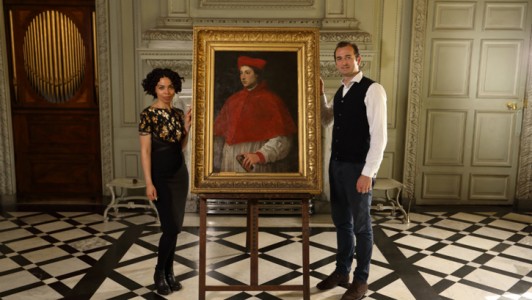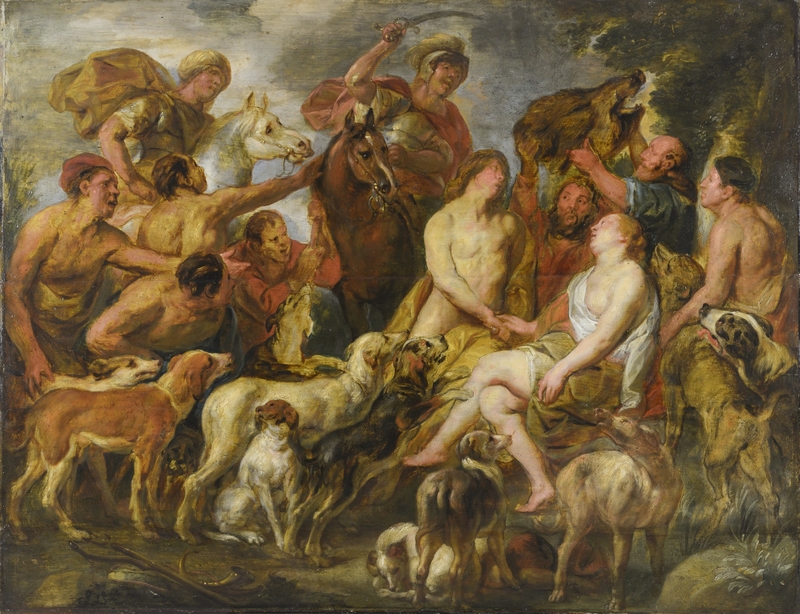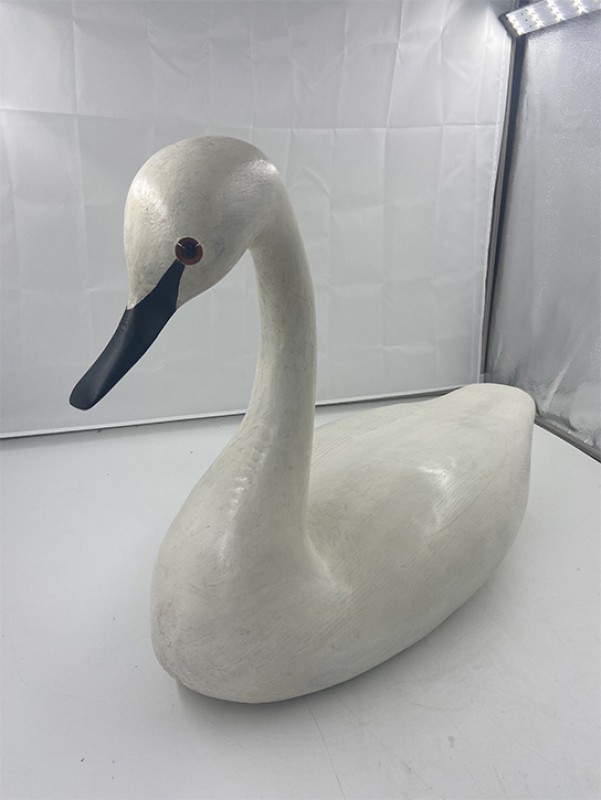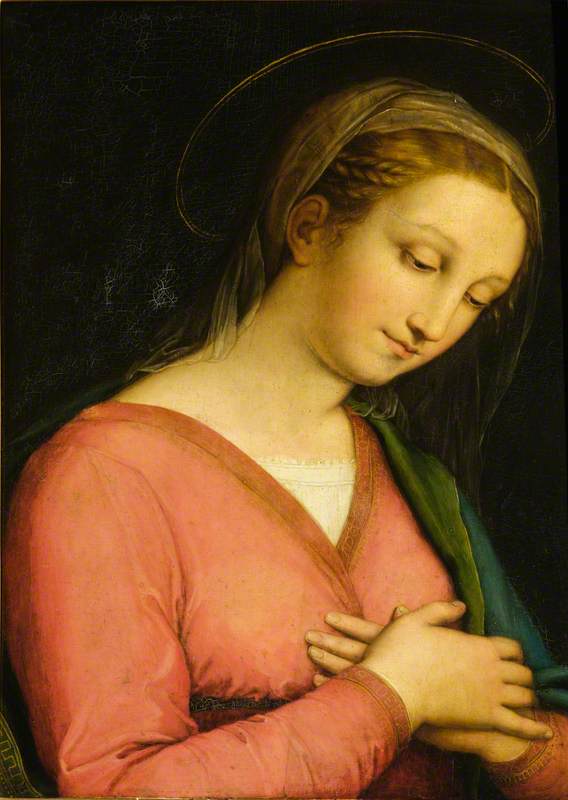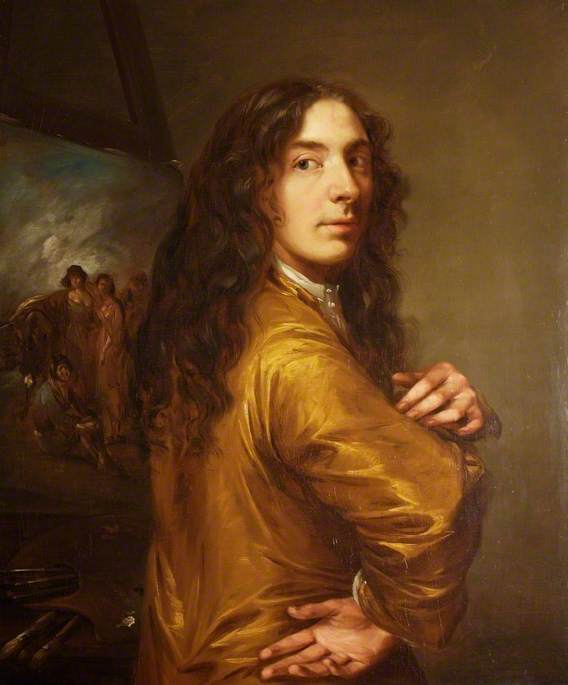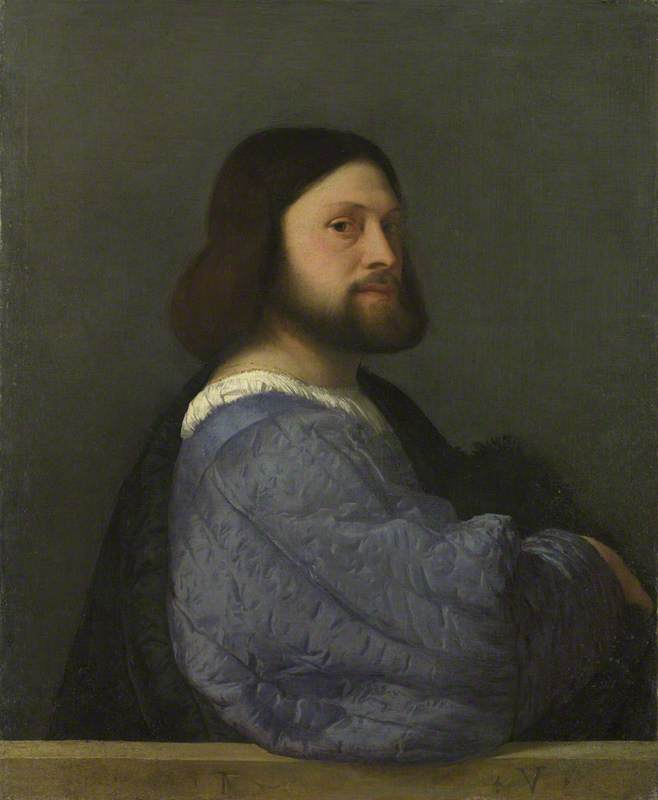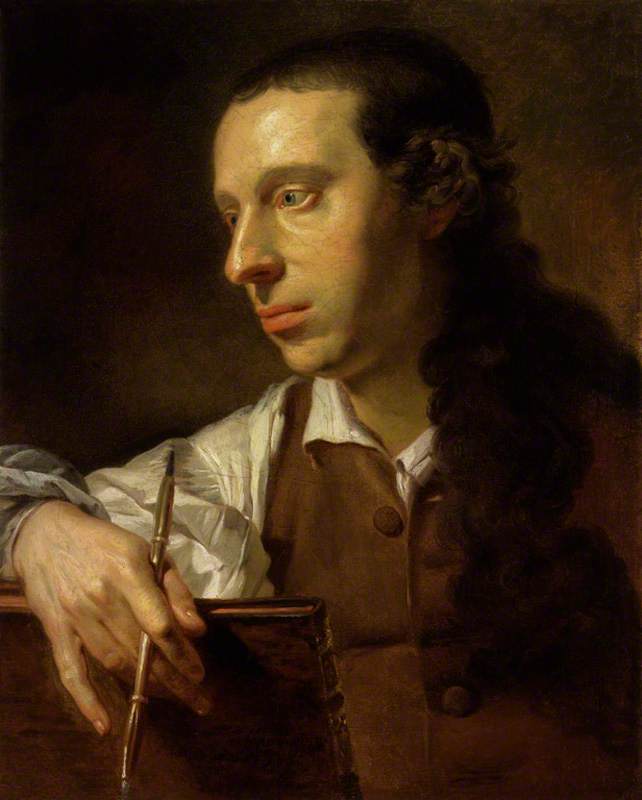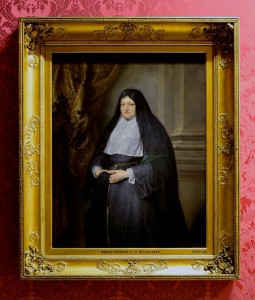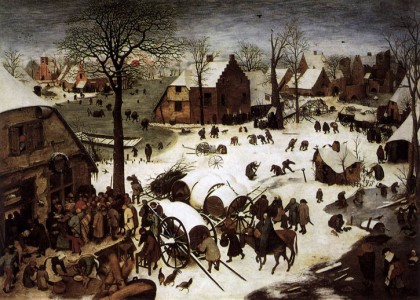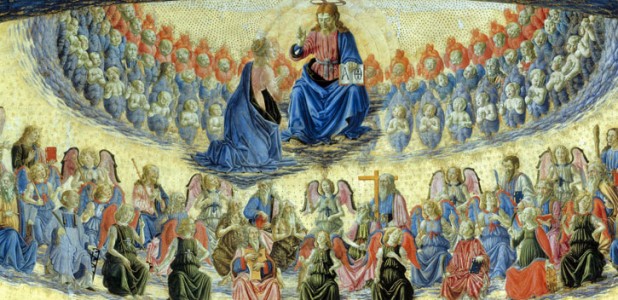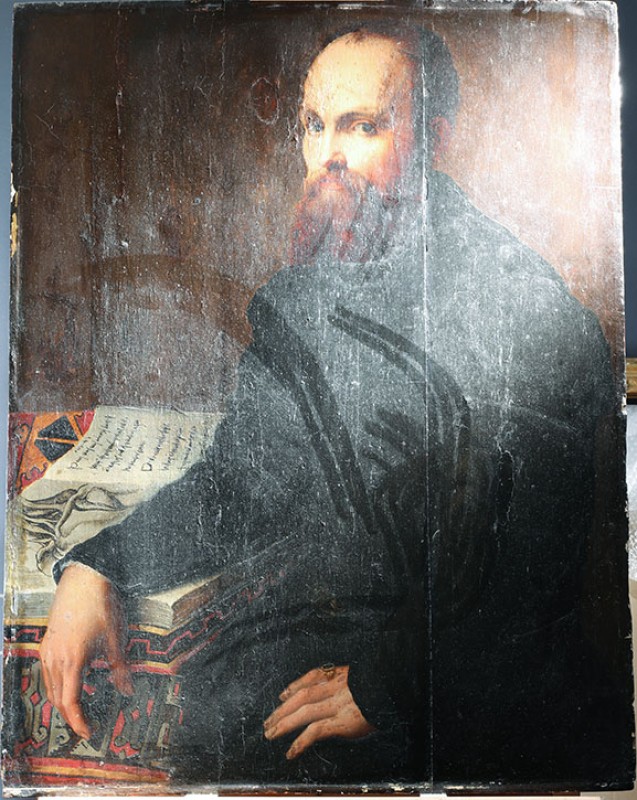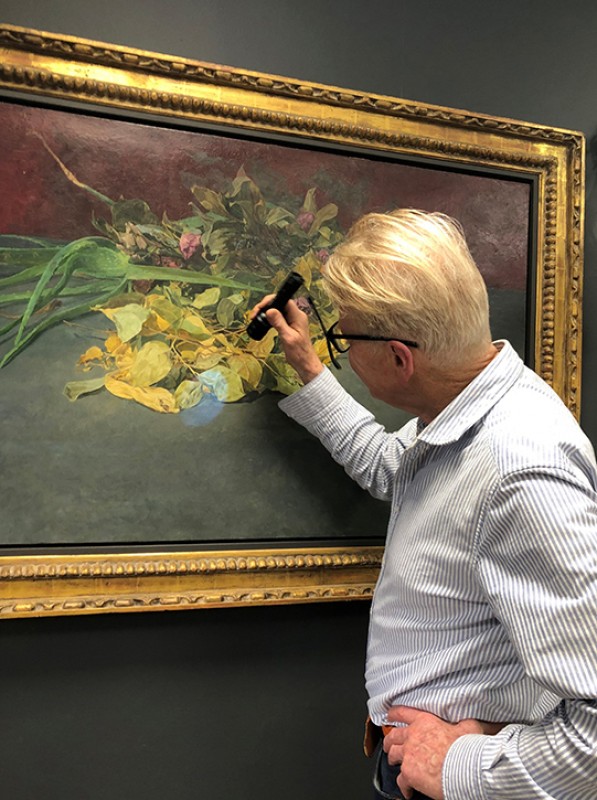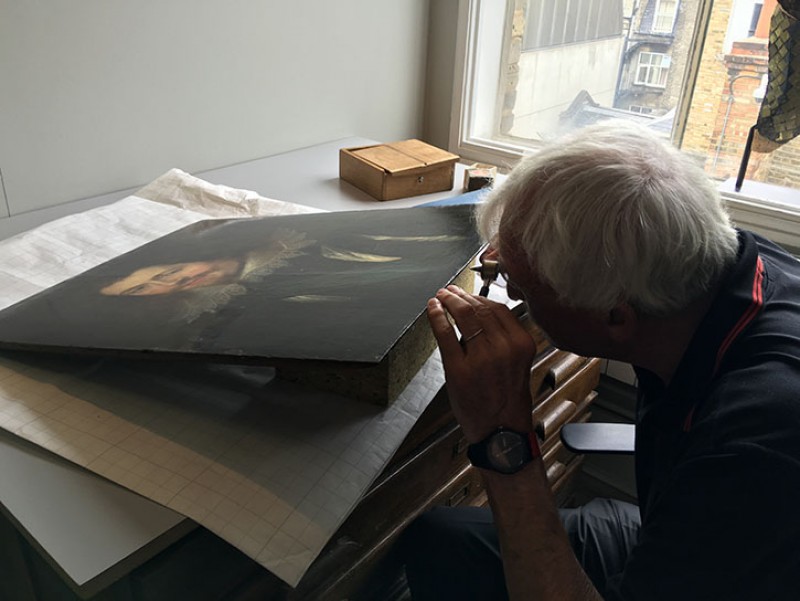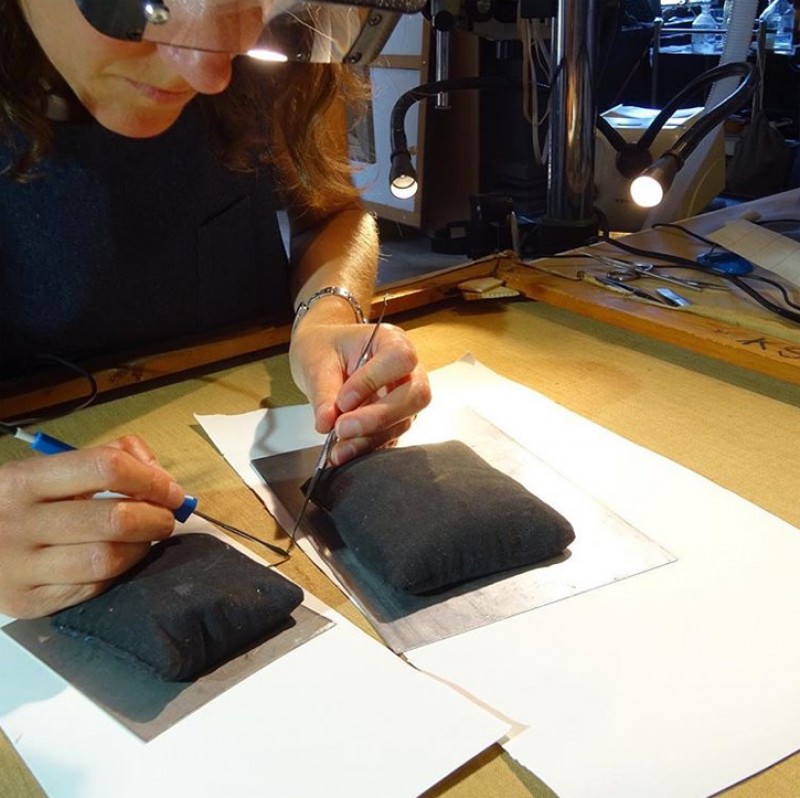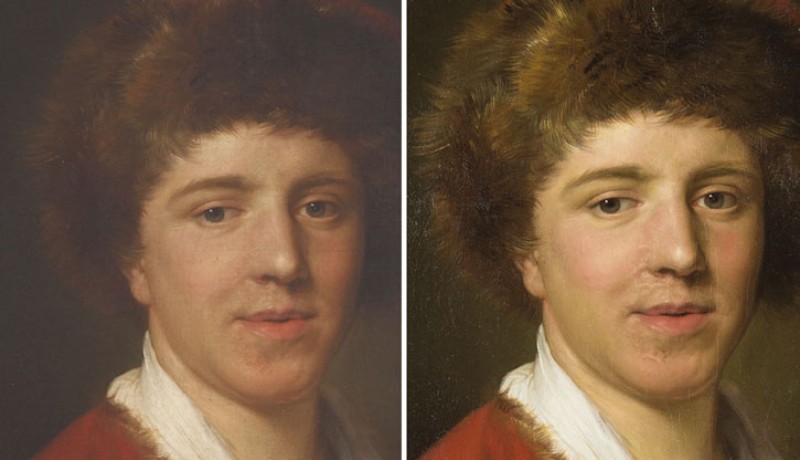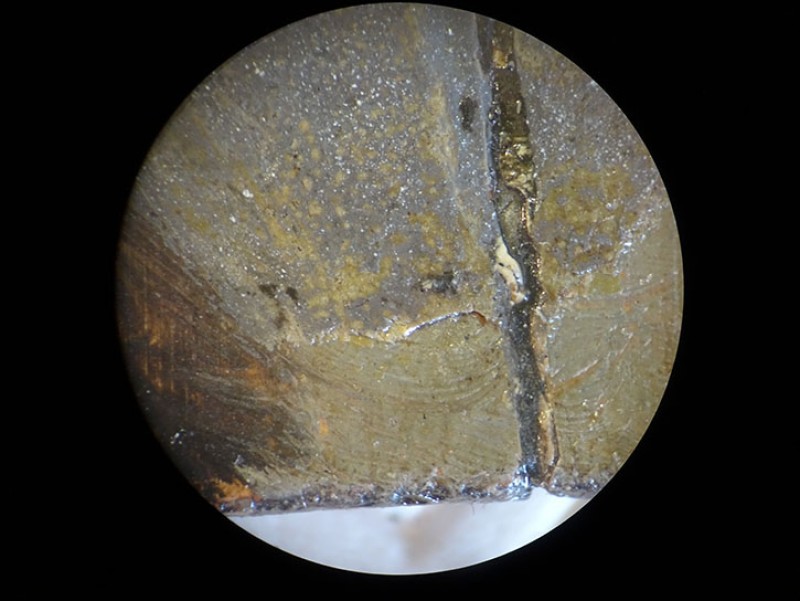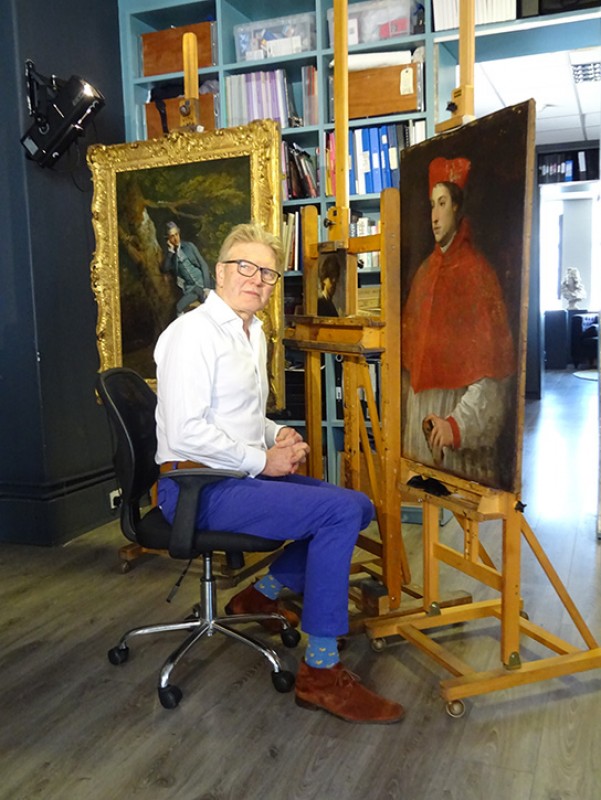In the third episode of the fourth series of Britain's Lost Masterpieces, which aired on 13th November 2019 on BBC Four, Dr Bendor Grosvenor searched through the Art UK website and came across a picture in the National Museum of Wales (in Cardiff) which he believed to be promising. The picture was brought to my studio for analysis and treatment.
Before and after conservation of 'Virgin and Child with a Pomegranate'
c.1500, oil on panel, originally thought to be by the studio of Sandro Botticelli (1444/1445–1510) 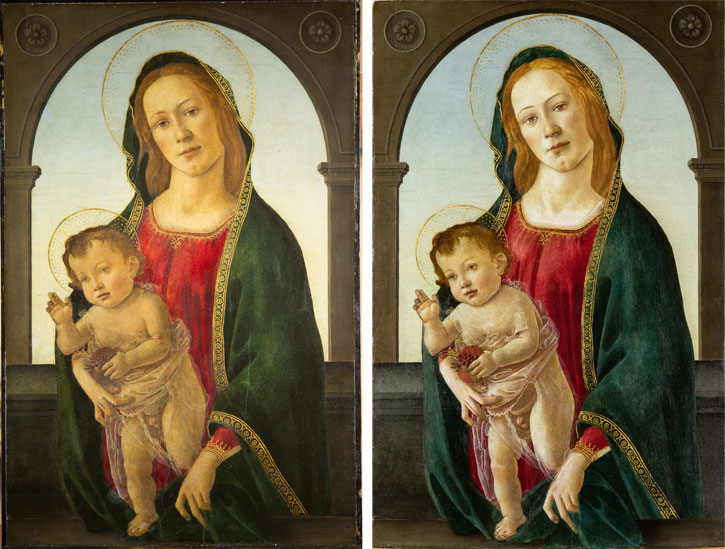
The painting depicts the Madonna and Child, with Christ holding a pomegranate (a symbol of his future resurrection) in his hand. It is painted in oil paint on a poplar panel, and measures 68 x 41 cm, but it relates to a much larger artwork by Botticelli: the altarpiece of San Barnaba, now on display in the Uffizi Gallery in Florence, where the Madonna also holds a Christ child in the same position.
The San Barnaba altarpiece
1488, tempera on wood by Sandro Botticelli (1444/1445–1510), Uffizi Gallery 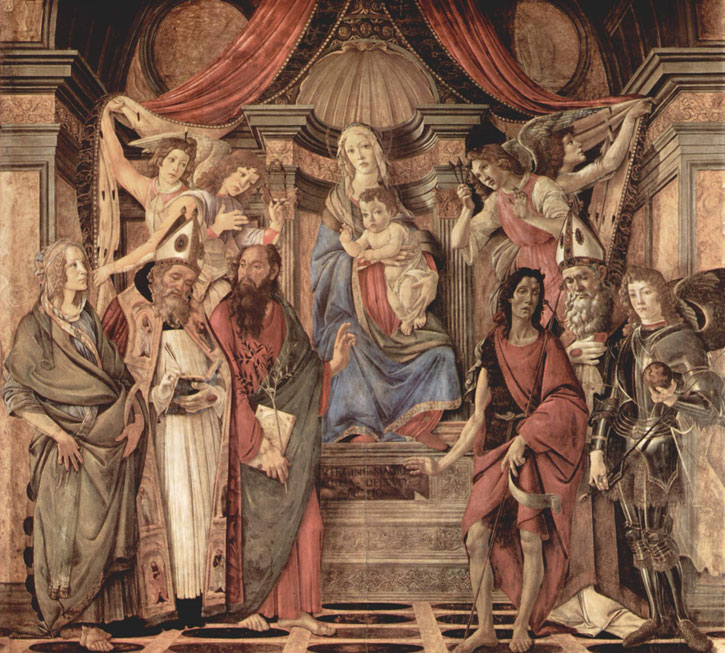
Sandro Botticelli lived and worked in Florence all his life. He employed a number of assistants in his studio to help him meet the demand for his artworks. Clients with a more limited budget might commission a smaller copy of Botticelli's popular large-scale artworks, with fewer details and a simpler composition, and these might be painted either in part or entirely by Botticelli's assistants. Is the Cardiff picture one of those commissions?
Virgin and Child with a Pomegranate
c.1500
Sandro Botticelli (1444/1445–1510) (studio of) 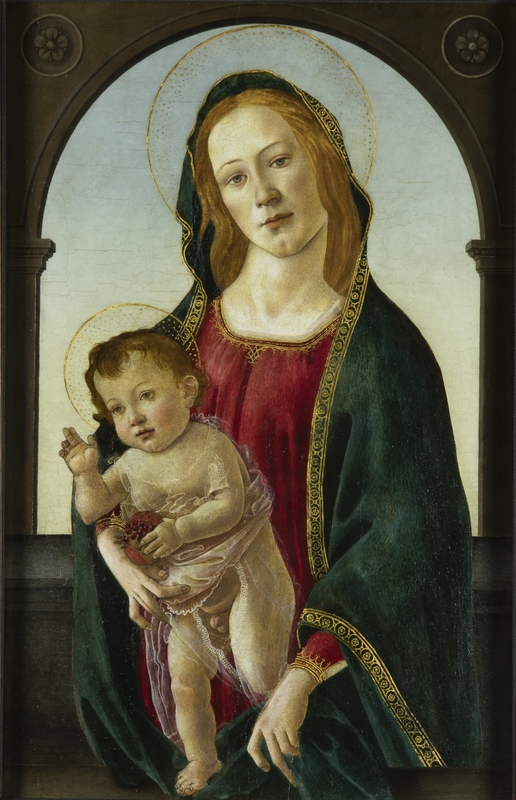
The painting came into the collection of the Cardiff Museum in 1951 when it was donated as part of the bequest by two sisters from mid-Wales, Margaret and Gwendoline Davies. The granddaughters of one of the most successful entrepreneurs of the nineteenth century, Margaret and Gwendoline were unusually well-educated for women in that period; they also had been brought up with a strong sense of duty to do good with the money they would inherit, and they had a great enthusiasm for art. They started collecting in the early 1900s, and supported many cultural and educational initiatives in Wales during the 1920s and 1930s, setting up a centre for music and the arts at Gregynog Hall.
Gwendoline died in 1951, donating a number of artworks to the Museum of Wales, including the Virgin and Child with a Pomegranate. Another 152 objects followed in 1963 after Margaret died.
When Gwendoline bought the picture, it was considered to be by Botticelli, but shortly after it arrived at the museum experts began to doubt the attribution. It was downgraded to the status of a later copy by an unknown artist. What made the experts suspicious?
On arrival at the studio, one of the first things I observed was that the cracks in the area of the background were not real cracks but had been painted on and faked to make the background look old and cracked. Not a good first sign! But in spite of this unpromising first look, there were hints that the picture might be one of great quality.
With scientific analysis and conservation treatment, an unexpected secret was revealed, and the picture emerged transformed.
The poplar panel and original paint layers were very fragile, requiring extreme care during treatment. In collaboration with Britta New of The National Gallery, a panel tray was made, which gently supports the panel whilst allowing small movements in response to humidity changes.
Removing the dirt, old varnish, and very hard overpaint was a meticulous process which was carried out in large parts under the microscope by senior conservators at Simon Gillespie Studio. The treatment revealed a work of extraordinary quality, with areas, including the Madonna's head, painted in Botticelli's distinctive manner.
Before and after conservation of the Virgin's face in 'Virgin and Child with a Pomegranate'
c.1500, oil on board, originally thought to be by the studio of Sandro Botticelli (1444/1445–1510) 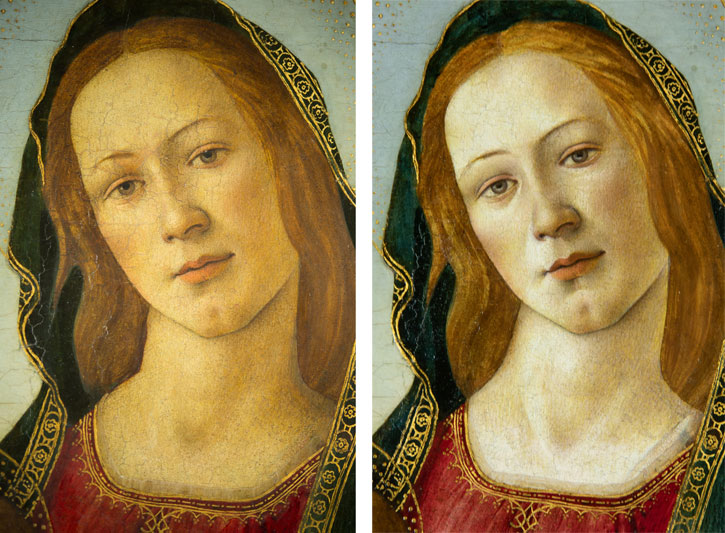
I also discovered that the arched background was the work of a later artist, added in the early twentieth century, probably to hide the fact that the painting had been significantly reduced in size from a larger work. After discussion with the museum, it was decided to keep the added background, to reflect the painting's history.
Treatment of the painting under the microscope
Infra-red photographs, which are used to show carbon drawing lines underneath the paint layers, revealed under-drawing in a style typical of Botticelli's studio. Even more exciting, the drawing lines showed that the artist had made numerous changes in areas including the hands, proving that the painting was not a simple copy.
Infra-red image of the Virgin's hand
The infra-red photos also revealed a secret kept hidden for over 500 years: underneath the paint layers was a carbon drawing showing the profile of a man's head – a doodle almost certainly by Botticelli before the paint was applied in that area.
Infra-red image of the doodle in the bottom left-hand corner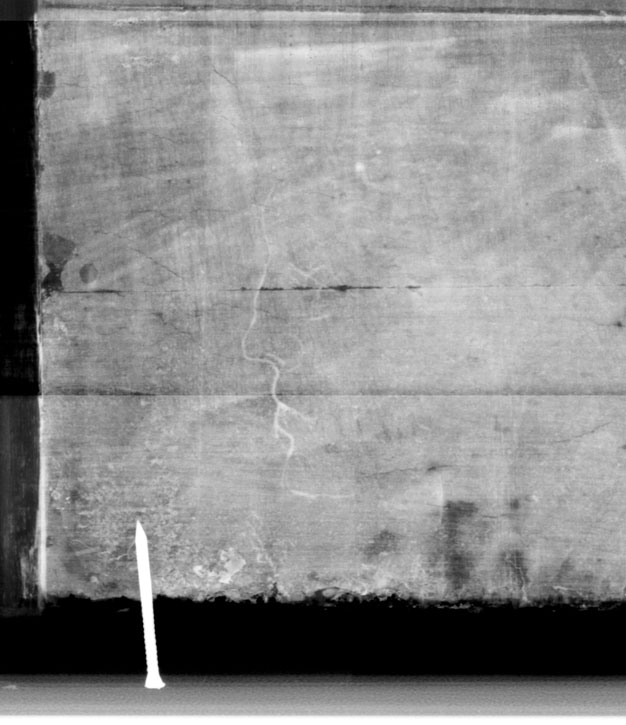
This is a wonderful example of how modern technology enables us to reveal aspects of a painting that are impossible to see with the naked eye and have therefore been kept hidden for centuries.
Laurence Kanter, Chief Curator of the Yale University Art Gallery and an expert in Botticelli's works, said of this painting after treatment:
'Clearly this beautiful painting came from Botticelli's studio. Probably Botticelli himself is responsible for more than a bit of it. A great deal more study is needed to solve the riddles of 'how much', 'what parts', 'why', 'when', and hopefully the painting can now be studied further by scholars and the public alike.'
The painting will now go on display, catalogued as 'attributed to Botticelli and workshop'. Hopefully, ongoing research and discussion with other Botticelli scholars will help to confirm the painting's attribution.
Before and after conservation of Christ in 'Virgin and Child with a Pomegranate'
c.1500, oil on board, originally thought to be by the studio of Sandro Botticelli (1444/1445–1510) 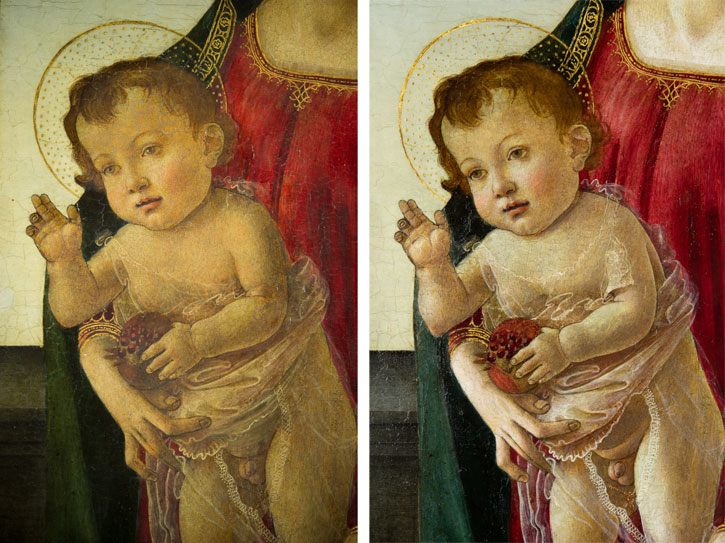
It has been hugely exciting to bring this masterpiece back to life, enabling its true quality to be recognised. Far from being the work of a later copyist, it is now clear that the painting came from Botticelli's workshop and Botticelli himself painted at least parts, if not all of it.
Simon Gillespie, Director at Simon Gillespie Studio

